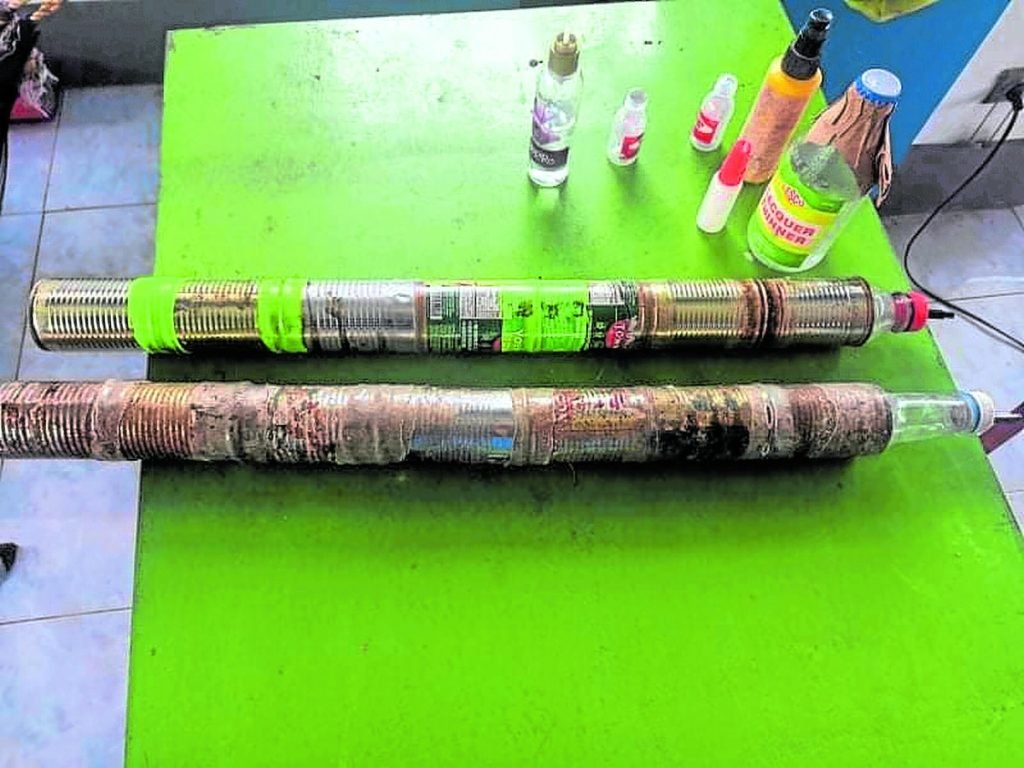

DANGEROUS The Department of Health said that the majority of injuries reported this year were traced to illegal firecrackers, particularly the “boga” or improvised cannon, and “five star.” —Inquirer file photo
MANILA, Philippines — More Filipinos have so far been injured due to illegal firecrackers in the days leading to Christmas morning this year compared to 2023, despite the scattered rain showers felt in some parts of the country from Christmas Eve to Dec. 25.
Based on data released on Wednesday by the Department of Health (DOH), 43 firecracker-related injuries were monitored across the country from Dec. 22 to 6 a.m. of Dec. 25, of which 34 involved minors.
This was 54.57 percent higher than the 28 cases recorded in the same period last year.
READ: Gov’t agencies start fireworks monitoring
From Tuesday to Wednesday alone, the DOH reported that 18 people were injured due to firecrackers and the number is expected to spike on New Year’s Eve and New Year’s Day.
Article continues after this advertisement
According to DOH spokesperson Albert Domingo, they are expecting a higher number of firecracker-related injuries this year as people get more lax since the lifting of pandemic restrictions.
Article continues after this advertisement
“While we are going further away from the end of the pandemic, people are becoming more confident to go out,” he said.
High alert
The DOH said it was alarmed that 86 percent of those injured were due to illegal firecrackers, particularly the “boga” (an improvised cannon made of PVC) and the “five star.”
“We are coordinating with our law enforcement agencies. It seems that the number of stubborn people making and selling these illegal fireworks has also grown,” Domingo said.
The DOH added that it has raised the “code white” alert for all hospitals and health facilities nationwide for Dec. 24 and Dec. 25, as well as from Dec. 30 to Jan. 1, to ensure a safer celebration during the holiday season.
Medical personnel in hospitals and health offices are required to be on high alert and prepared to provide necessary health services.
This is particularly important during holidays, when large gatherings are anticipated that may potentially lead to health emergencies.
The Department of the Interior and Local Government (DILG) last year directed local government units (LGUs) to pass ordinances “to ban the individual, personal or household use of firecrackers of any kind.”
Cities and municipalities were also encouraged to restrict the use of firecrackers only to community fireworks displays that have a permit from the LGU concerned.
Harsh penalties
The DILG recommended harsh penalties for violators, including imprisonment of not more than six months and/or a fine of not more than P2,500 upon the discretion of the court.
Establishments violating the ordinance also face the possible revocation of their business permits.
The ordinance penalties will be on top of the sanctions for violating Republic Act No. 7183, the 1992 law regulating the manufacture, sale and use of firecrackers and other pyrotechnic devices.
Under the law, persons caught manufacturing, selling, distributing or using illegal firecrackers and pyrotechnic devices will be fined up to P30,000, imprisoned for six months to one year, their inventory confiscated and their license and business permit canceled.
Banned firecrackers
The police are also authorized to confiscate illegal firecrackers listed and described under DILG Memorandum Circular (MC) No. 2017-105, supplemented by MC 2017-168, particularly “watusi,” “piccolo,” “poppop,” and five star—which are considered small but remain prohibited for causing a number of injuries to the public, especially children.
Also considered illegal are firecrackers with fuses that burn in less than three seconds or more than six seconds, firecrackers with a mixture of phosphorus or sulfur and chlorate and other types of firecrackers containing more than 0.2 grams or 1/3 teaspoon of explosive powder.
In 2017, then President Rodrigo Duterte issued Executive Order No. 28 confining firecracker use to community fireworks displays, which became the template of LGU ordinances regulating firecracker use.
The policy has been credited for the consistent decline in firecracker-related injuries ever since.







